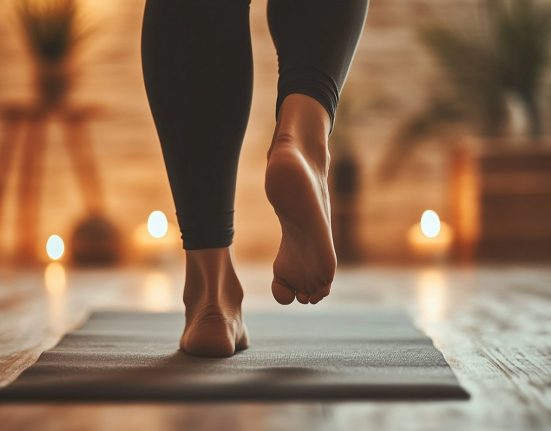Chinese New Year 2023 is around the corner. On top of rearranging your furniture for feng shui optimisation and considering the twists and turns predicted for your zodiac sign in 2023, you’re likely also spring cleaning.
Even in our own time, most of us do household chores to maintain order and hygiene at home. But often, we only engage in surface-level house-cleaning practices. In this article, we’ll cover why you should make deep cleaning your home part of your housekeeping routine and the steps you can take to deep clean.
Why You Should Deep Clean Your Home
Regular cleaning is essential to maintain your home’s hygiene. It includes chores like sweeping, vacuuming, mopping, changing bedsheets and towels and cleaning the toilet.
Deep cleaning is more detailed and intensive and can rid accumulated and stubborn toxins hiding in easily overlooked spots. It’s all about thoroughly sanitising and disinfecting surfaces. Ideally, you should aim to deep clean your home every six to 12 months.
While the steps to deep clean your home depend on various factors, including the existing care you give it, there are still best practices for everyone seeking to keep their homes sanitary and pest-free. You can also use these deep cleaning tips as a method for COVID-19 prevention and recovery!
1. Disinfect Your Toilets and Bathrooms
Due to constant exposure to moisture, your toilets and bathrooms are susceptible to mould, soap scum, and grime. Depending on the level of ventilation they receive, they can also be hotbeds of germs and potentially dangerous bacteria, like E. coli.
Therefore, you should clean them at least once a week. For most of us, regular cleaning in the bathroom is a quick scrub of the toilet bowl and shower areas. But to deep clean our bathroom, you want to scrub the grout, remove stains on sinks, get rid of soap scum on walls and glass, and disinfect knobs, shower curtains, and any other crevices.
To deep clean your toilets and bathrooms, prepare the relevant supplies:
- Castile soap
- Baking soda and white vinegar
- Pumice stone
- Spray bottle
- Small bucket
- Toilet brush
- Toothbrush
- Cleaning gloves
Castile soap is a natural, non-toxic, biodegradable, and versatile soap. You can find it in any NTUC Fairprice. In your spray bottle, add one portion of castile soap to three parts of water. Spray all the surfaces inside your toilets and bathrooms, and leave the solution to disinfect them for 10 minutes.
Then, dip your toothbrushes and toilet brushes into a small bucket of one part baking soda and two parts white vinegar. Scrub all surfaces, paying attention to visible, stubborn stains along cracks between tiles. Work on easily overlooked spots during regular cleaning: under the sink, behind the toilet bowl, drain filters, etc. Leave the baking soda and white vinegar mix on the surfaces you scrub for some time too. The solution will continue breaking down dirt and undesirable build-up.
For seemingly impossible stains on porcelain and rust, pour water onto pumice stone, which will break it into an exfoliant-like paste. Scrub away: while pumice stone may be a hard, organic material, it’s still softer than porcelain, keeping its surface smooth on contact, and simultaneously, polished like new.
2. Clean the Fridge and Oven
Fridges and ovens are natural accumulators of food waste, dirt, grime, odour, and grease. Even if they’re used lightly, it’s advisable to deep clean them every three to six months. We have a responsibility to ensure our kitchen appliances help make our food consumable too!
Migrate the contents of your fridge into coolers. Remove drawers and shelves, and wash all of their surfaces. Wipe the interior of your fridge down with a cleaning cloth of soap and water. For persistent odour, rest an uncovered bowl of baking soda inside for a few hours. Reinstall your drawers and shelves, and repack your fridge with its contents.
You can also use baking soda and water to clean the inside of your oven. Coat the inner surfaces with the mixture, and scrub.
3. Degrease Kitchen Floors
Vacuuming and mopping your kitchen floor is a good cleaning routine. But they’re not intensive enough against grease that accumulates over time, especially if you cook regularly. Grease can seep into the grout and stick to your floors, creating a dirty appearance and breeding ground for bacteria.
After regular cleaning, add degreasing product to a pail of water based on its recommended ratio and use that solution to mop your floor. You may use a separate portion of that solution to degrease other surfaces as well, starting from the stove, overhead ventilator, counter surfaces, sink, walls, cabinet doors, etc.
4. Steam Clean Mattresses
Your mattress can become a hotbed of germs over the weeks and months and can also begin to smell and harbour dust mites. This is particularly true in Singapore where the climate makes you more likely to perspire in bed. Steam cleaning the mattress every six months will keep it looking and smelling fresh.
Before beginning your steam cleaning operation, first vacuum the mattress with the hose attachment. If the mattress smells, sprinkle baking soda over it and let it sit for a while before vacuuming. Next, use a steam cleaner to go over both sides of the mattress. Handheld steamers are preferable: they’re mobile, easy to use, and are offered at affordable prices.
Typically, a professional mattress cleaning service for a queen-sized mattress costs around $70 to $100. If you want to get into steam cleaning, buying your own handheld steam cleaner will set you back by at least a few hundred dollars.
5. Wax Parquet Floors
Parquet floors look nice but are also a bit trickier to maintain than tiles. Waxing your parquet flooring from time to time will keep it looking and feeling great, hide the appearance of scratches and make them less susceptible to staining or absorbing spills. Parquet flooring also lasts longer if you wax it regularly.
You should wax your parquet floors every six to 18 months, depending on wear. Before waxing, sweep and mop the floor to remove all traces of dust. You can then apply an even coat of floor polish and rub and buff with a soft cloth, leaving surfaces shiny, and on occasion, protected from damage.
A quick search on Google reveals the cost of waxing your floors costs $1.20 to $2 per sq ft.








